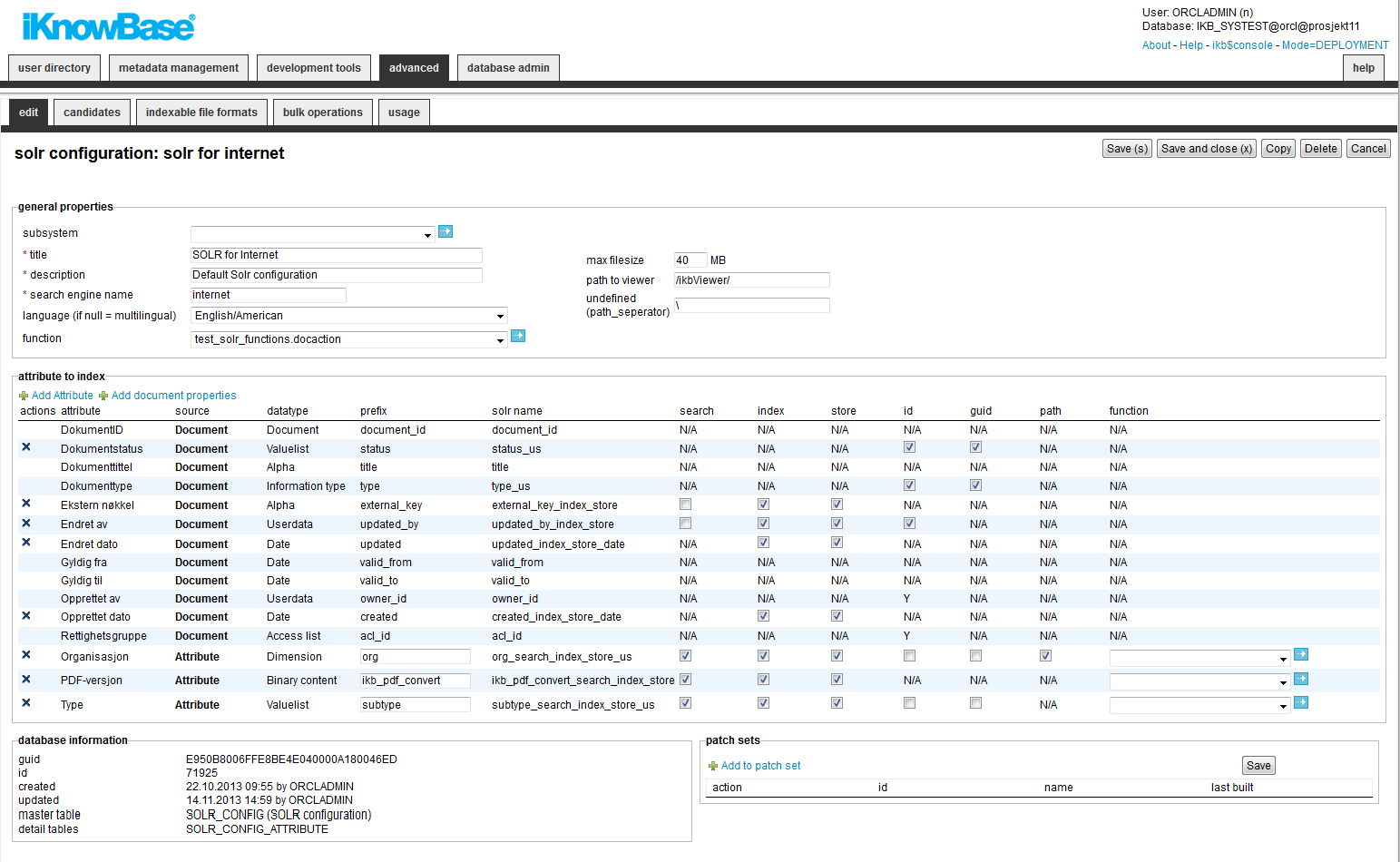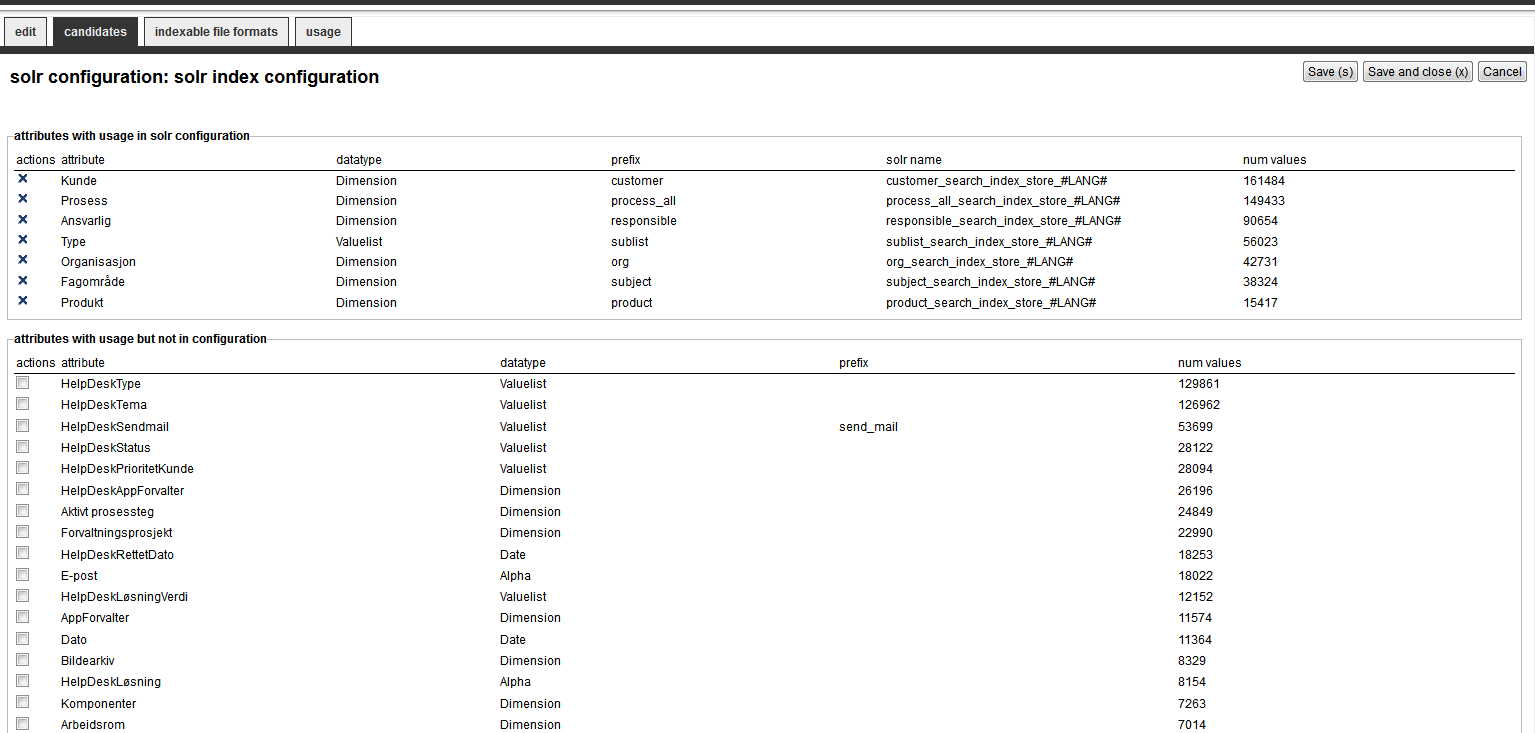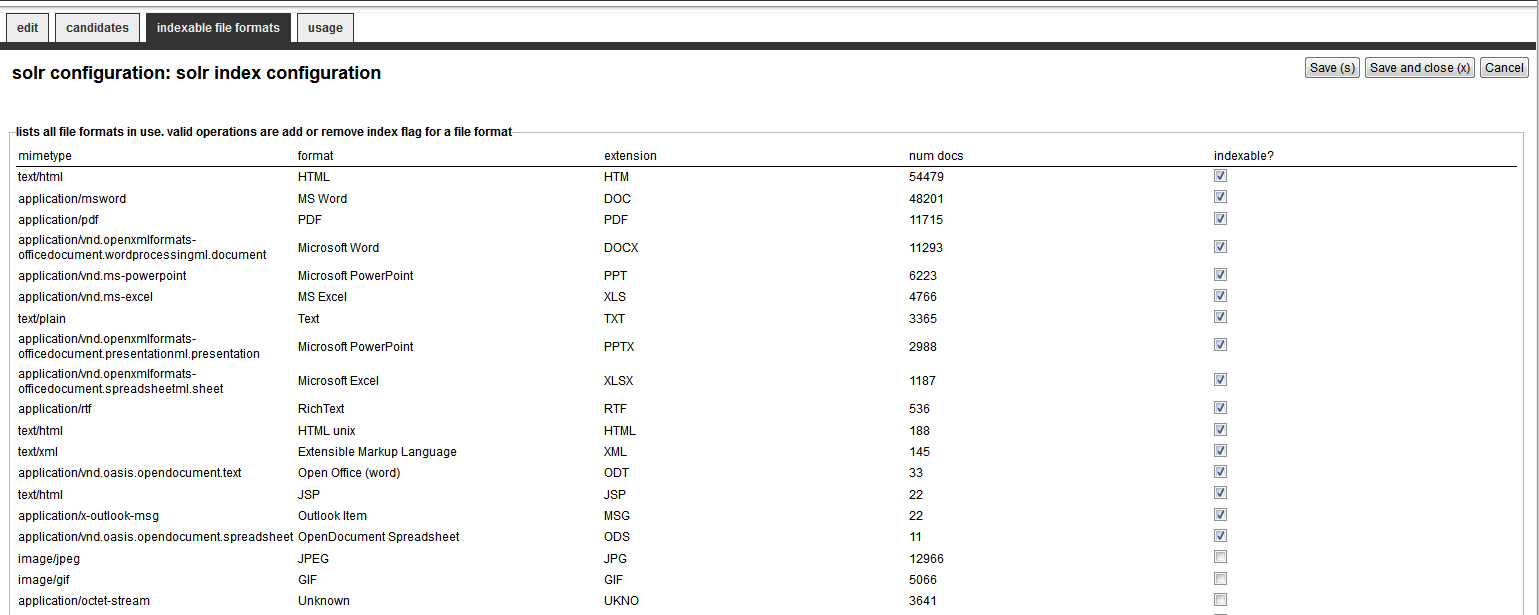
| Solr Configuration | ||
|---|---|---|
| Previous | ||
| Page cache strategy | ||
When using the Solr search engine, we need to define what kind of information we should index for each document.
This screen allows you to add fine grained definitions for each attribute you want to index and also how it should be represented in Solr.
In Solr we differ between three main types of storage :
These three types can be combinded.
In addition it is also possible for most attributes to index the ident (either the id or the GUID) for the value and the Path for dimensions. The SOLR representations for these fields will be attributeName__ident,attributeName__guid or attributeName__path.
In many implementations the labels are in more than one language and in those cases all labels with NLS support will be populated into separate fields in Solr. By default, Solr is set up to support Norwegian and English.
It is also possible to add extra value to the indexer by using custom written PL/SQL functions. They can be triggered document-based or for each attribute.
As a rule, you should have only ONE Solr configuration for each search engine and share it between all Solr events populating data to the index.
This section describes the properties of an Solr configuration, as shown on the corresponding Edit pane tab.

| Property | Description |
|---|---|
| Subsystem |
Select the appropriate subsystem. |
| Title |
Type a name for the Solr Configuraiton. |
| Description |
Type a description for Solr Configuration. |
| Search Engine |
When you index data to more than one solr instance, you need to define seperate names for the destination. These are logical names, but refer to Installation properties where you define index- and search URLs to the instances. If you define a new search name, Installation properties will be populated by dummy data. |
| Language |
Select a language if you have a single language environment and the index should only handle that specific language. Set the value to blank if you want to index the values in all languages defined in iKnowBase. |
| Function |
A custom function is used to execute your own built-in function to add / remove content before it is sent to the indexer service. (e.g. You want to create a Solr field for sorting where you select an attribute value if it exists, else you use the document timestamp).
|
| Max filesize |
Defines maximum size of a binary file to be indexed. Very large files can be time consuming to index and should be avoided. |
| Path to viewer |
Defines where and how the link should be generated when indexed. Default values is retrieved from domain preferences, but can be overridden here. |
| Path seperator |
Defines the seperator used when building path elements from dimensions. |
| Attribute to index |
You can choose between two types of attributes:
|
| Actions |
Delete the parameter by clicking the icon. Mandatory attributes are not possible to delete. |
| Attribute |
Name of the attribute / property. |
| Source |
Document means it’s a document property, Attribute means its a regular attribute on the document. |
| Datatype |
Display the datatype. |
| Prefix |
First part of the name used for the attribute in Solr. For attribute values the full name is generated when you select how to store/index/search the value in Solr. Some document properties are locked and will be named by the same value as the prefix. |
| Solr Name |
The full name in Solr for the attribute. |
| Search |
Select (if available) if you want the value to be searchable. |
| Index |
Select (if available) if you want the value to be indexed. |
| Store |
Select (if available) if you want the value to be stored. |
| ID |
Select (if available) if you want to index and store the Ident of the value. The Solr name will be
|
| GUID |
Select (if available) if you want to index and store the GUID of the value. The Solr name will be
|
| Path |
Select (if available) if you want to store the path of the value. The Solr name will be
|
| Function |
A custom function is used to execute your own built-in function to add / remove content before it is sent to the indexer service.
|

| Property | Description |
|---|---|
| Attributes with usage in Solr Configuration |
Displays all selected attributes and how many times they are used by documents. This might indicate if the attribute is a useful indexed attribute. The only available operation you can do is to delete the attribute from the configuration. |
| Attributes with usage but not in Solr Configuration |
Displays all attributes not in the configuration and how many times they are used by documents. This might indicate if the attribute is a useful indexed attribute. The only available operation you can do is to add the attribute to the configuration. |

| Property | Description |
|---|---|
| File formats supported in Solr Configuration |
Displays all used file formats in iKnowBase. You can decide if files with this format should be indexed or not. |

| Property | Description |
|---|---|
| Select events for bulk operation |
Displays all events using the current configuration. You can easily reindex all documents for all events using the configuration, or delete all documents from solr by checking the boxes and then press the desired button. |
| Cleanup misconfigured changelog entries |
The SOLR changelog might have entries originally created by a event or a solr configuration.
|
| Previous | Top | |
| Page cache strategy |